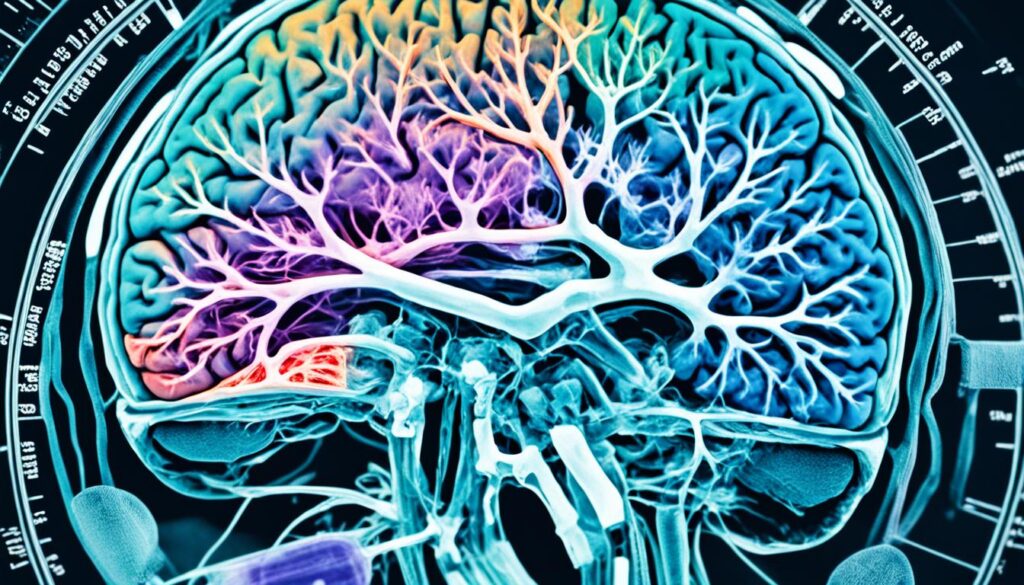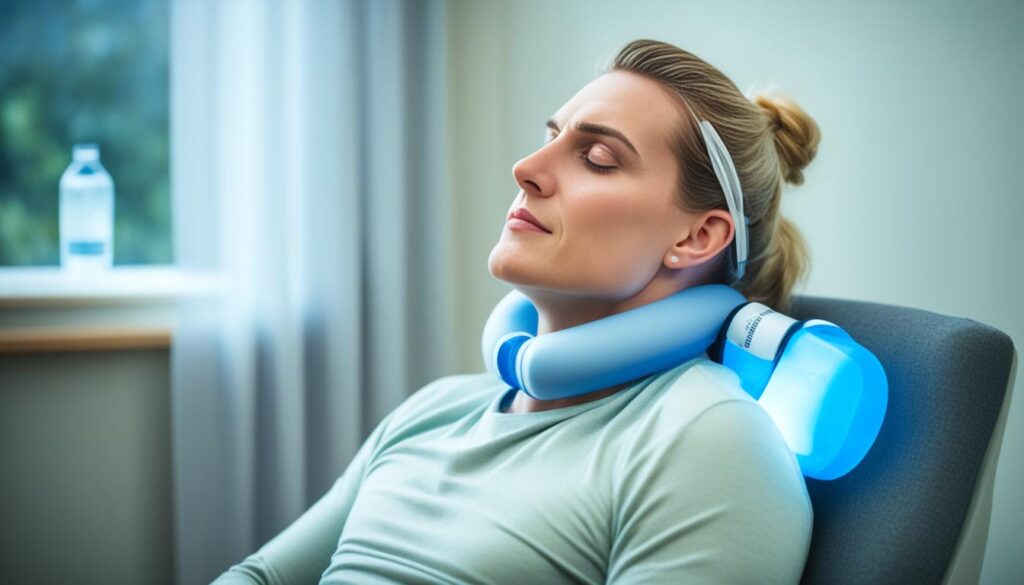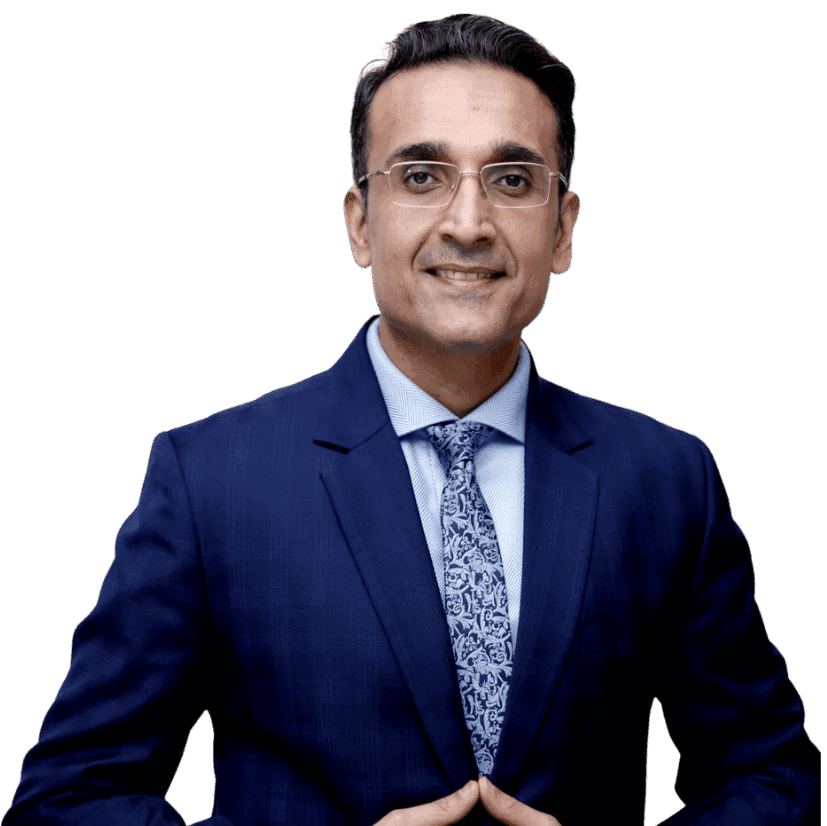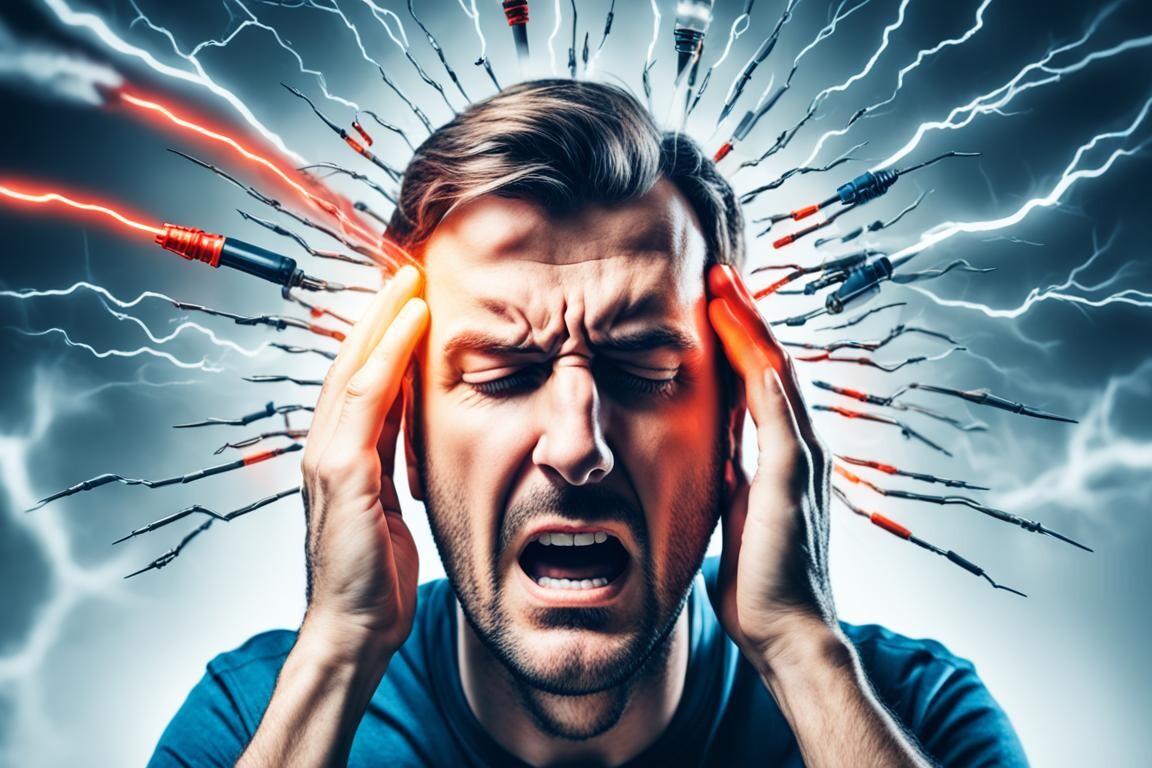Do you wake up with a stabbing pain behind one eye, night after night, almost like clockwork?
If yes, you might be dealing with a chronic cluster headache. These headaches aren’t your average head pain. They strike hard, fast, and repeatedly, often leaving people desperate for answers. Many patients describe the agony as unbearable – even worse than childbirth or kidney stones.
In this blog, we will explain what a chronic cluster headache really is, how it’s different from other types of headaches, what causes it, how you can spot the symptoms, and most importantly, what treatments bring relief.
Table of Contents
ToggleWhat is a Chronic Cluster Headache?
A chronic cluster headache is one of the most painful types of headaches. It falls under a group of headaches known as trigeminal autonomic cephalalgias. What makes this condition different is how frequent and intense the attacks are. Unlike episodic cluster headaches, chronic types occur without significant breaks.
Definition & Diagnostic Criteria (per ICHD-3 classification)
Doctors use the International Classification of Headache Disorders (ICHD-3) to diagnose cluster headaches.
- Attacks must occur for more than one year without a remission or with remissions lasting less than 3 months.
- Pain is always one-sided, intense, and typically centered around or behind one eye.
- Episodes last from 15 to 180 minutes, up to eight times a day.
A neurologist confirms this diagnosis using symptoms, history, and sometimes tests to rule out other causes.
Episodic vs. Chronic Cluster Headaches
While both are excruciating, the main difference lies in their pattern.
| Type | Frequency | Remission Periods |
|---|---|---|
| Episodic | Comes in clusters for weeks/months | Remission of 3 months or more |
| Chronic | Attacks occur almost daily | Remission less than 3 months or none |
Chronic cluster headache is far more disabling due to the lack of recovery time.
Why is it called “Suicide Headache”?
The term isn’t dramatic. It reflects the extreme suffering people feel.
- Pain is sudden, sharp, and intense – often described as a red-hot poker in the eye.
- Attacks strike quickly, and sufferers may pace, rock, or even scream due to the pain.
- Some patients have reported suicidal thoughts due to repeated, uncontrollable pain.
According to NIH, up to 15% of people with cluster headaches experience the chronic form.
Common Symptoms of Chronic Cluster Headache
These symptoms are predictable but severe, making diagnosis easier yet life difficult.
Pain Characteristics (intense, piercing, unilateral, eye-area)
The core symptom is pain – but not just any pain.
- Piercing, burning pain usually behind one eye.
- Feels like being stabbed with an ice pick.
- Always on the same side of the head.
It’s sudden and can peak in minutes, making daily activities almost impossible.
Autonomic Symptoms (tearing, nasal congestion, ptosis)
Along with head pain, people notice physical signs:
- Red or teary eyes.
- Blocked or runny nose.
- Drooping eyelid (ptosis).
- Small pupil in the affected eye.
These symptoms occur on the same side as the pain.
Duration and Frequency of Attacks (15–180 mins, up to 8 times/day)
Attack duration and frequency make this type stand out.
- Each attack can last from 15 minutes to 3 hours.
- Can happen up to 8 times per day.
- Usually occur at the same time each day, often at night.
This regularity disrupts sleep and daily life, adding to stress and fatigue.
Triggers to Watch For (alcohol, histamine, stress, bright light)
Some things can spark a chronic cluster headache attack. Knowing them helps with prevention:
- Alcohol (even one sip).
- Cigarette smoke.
- Strong smells (like paint or petrol).
- Bright or flashing lights.
- Heat or sudden weather changes.
A trigger diary can help patients identify what worsens their attacks.
Cleveland Clinic (2023): Over 80% of patients say the pain is the worst they’ve ever felt.
Causes and Risk Factors
What causes a chronic cluster headache is not fully known. But there are key factors.
Role of the Hypothalamus & Circadian Rhythms
The hypothalamus is a small part of the brain that controls your internal clock.
- Cluster headaches often follow a pattern, linked to body rhythms.
- MRI studies show abnormal activity in the hypothalamus during attacks.
This is why many attacks happen at night or during certain seasons.
Genetics and Family History
Family link is rare but possible.
- If someone in your family has it, your chances increase slightly.
- However, most patients don’t have any family history.
Lifestyle and Environmental Factors
While you can’t change your genes, some lifestyle habits matter.
- Smoking is strongly linked.
- Alcohol use, especially during cluster periods.
- Irregular sleep or high stress levels.
Link Between Smoking and Chronic Cluster Headaches
Studies show smoking plays a big role.
- Over 80% of chronic sufferers have a history of smoking.
- Tobacco may alter oxygen levels and brain pathways.
Men are 3 to 4 times more likely to get cluster headaches than women – Mayo Clinic, 2023.
How is a Chronic Cluster Headache Diagnosed?
There is no single test. Diagnosis is clinical but must be detailed.
Clinical Evaluation by a Neurologist
Dr. Chandril Chugh or another trained neurologist will:
- Ask about the nature, timing, and pattern of headaches.
- Check if symptoms match ICHD-3 criteria.
Proper history is crucial for accurate diagnosis.
Imaging Tests to Rule Out Other Causes (MRI, CT scan)
These aren’t used to confirm a chronic cluster headache, but to rule out serious issues.
- MRI can rule out tumors or aneurysms.
- CT scans help exclude sinus or eye problems.
Diagnostic Criteria from ICHD-3
ICHD-3 sets clear guidelines:
- At least 5 attacks.
- Pain is severe, one-sided, in or around the eye.
- With one or more autonomic symptoms.
- Attacks follow a regular daily pattern.

Effective Treatment Options for Chronic Cluster Headaches
Treatment for cluster heachache depends on stopping the pain quickly and preventing future attacks. Relief is possible with the right care.
Acute Treatments
These help stop an attack when it happens.
- High-flow oxygen therapy: Breathing pure oxygen through a mask can stop pain in 15 minutes. This is often the first choice.
- Triptans: Injectable or nasal forms (like Sumatriptan) work fast to ease the attack.
- Intranasal lidocaine: A numbing spray inside the nose may help some patients.
British Medical Journal (2022): 75% of patients report quick relief with oxygen therapy for cluster headache.
Preventive Medications
These are taken daily to reduce the number and severity of attacks.
- Verapamil: A heart medication that also prevents cluster headaches. Needs heart monitoring.
- Lithium: Used in bipolar disorder, helpful in chronic headache prevention.
- Topiramate: Used for epilepsy, lowers headache frequency.
- Melatonin: Helps adjust the sleep cycle and may work in milder cases.
Neuromodulation Techniques
These use small electrical pulses to calm nerves.
- Occipital nerve stimulation: A device placed under the skin behind the head.
- Vagus nerve stimulation: A hand-held device used to stimulate a nerve in the neck.
These are considered when medicines fail.
Surgical Options (last resort)
Rarely needed but can help severe chronic cases.
- Deep brain stimulation: Electrodes placed in the brain, only in extreme cases.
- Sphenopalatine ganglion stimulation: A device implanted near a nerve center in the face.
| Treatment Type | Examples |
|---|---|
| Fast-Acting Treatments |
|
| Preventive Treatments |
|

Home Remedies and Lifestyle Changes
These won’t cure a chronic cluster headache, but they can reduce triggers and improve daily life.
Headache Diary to Track Triggers
Write down when headaches occur, what you ate, how you slept, and your stress level.
- Helps identify patterns and triggers.
- Guides treatment plans and lifestyle tweaks.
Read: Natural Remedies For Cluster Headaches
Cold Compress & Dark Quiet Room
When an attack begins:
- Use an ice pack over the affected eye.
- Stay in a dark, quiet space.
This can ease discomfort while waiting for medications to kick in.
Sleep Hygiene and Regular Schedule
Good sleep reduces attack chances.
- Go to bed and wake up at the same time daily.
- Avoid screens 1 hour before bed.
Avoiding Alcohol and Tobacco
Alcohol is a strong trigger during active periods.
- Even small amounts can spark an attack.
- Quitting smoking may reduce long-term attack severity.
Read → Cluster Headache Triggers List – What to Avoid?
Stress Management Techniques (yoga, meditation)
While stress isn’t a direct cause, it can make attacks worse.
- Try yoga, mindfulness, or deep breathing.
- Light exercise like walking helps too.
Chronic Cluster Headache in Women: Are There Differences?
Women may be misdiagnosed more often or experience unique challenges.
- Hormonal changes can trigger or worsen attacks.
- Symptoms sometimes overlap with migraines.
- Doctors might overlook it, leading to delayed treatment.
Women should track their cycle and headache pattern to improve diagnosis.
Potential Future Treatments for Cluster Headaches
As science advances, researchers are uncovering new and innovative treatments that bring hope to those battling cluster headaches. One exciting direction involves nerve stimulation techniques designed to disrupt pain pathways in the brain and offer lasting relief.
Among these is sphenopalatine ganglion stimulation, which places a small device near a nerve bundle located behind the nose. By targeting this area, scientists aim to ease symptoms and reduce the frequency of attacks. Similarly, occipital nerve stimulation involves implanting a device near the base of the skull to modulate pain signals traveling from the back of the head to the brain—potentially offering long-term relief.
Another cutting-edge approach under investigation is deep brain stimulation. This technique implants electrodes deep in the brain to influence areas tied to pain perception, with the goal of interrupting the flow of pain signals.
Though promising, these procedures are still under clinical review. Continued research is essential to better understand their safety, effectiveness, and role in managing cluster headaches. If you’re exploring advanced options, it’s wise to consult a neurologist for cluster headache treatment to discuss emerging treatments tailored to your condition.
Lifestyle and Home Remedies for Cluster Headaches
Along with medical treatments, making certain lifestyle changes and trying home remedies can be beneficial in managing cluster headaches. These lifestyle modifications and alternative treatments can help reduce the frequency and intensity of cluster headache attacks, providing some relief from the debilitating pain.
Maintain a Regular Sleep Schedule
One important lifestyle change that can help manage cluster headaches is maintaining a consistent sleep schedule. Establishing a regular sleep routine and ensuring an adequate amount of sleep can help regulate your body’s internal clock and prevent triggers that can lead to cluster headache attacks. It is recommended to aim for 7-8 hours of quality sleep every night.
Avoid Alcohol
Alcohol consumption is a common trigger for cluster headaches. If you experience cluster headaches, it is advisable to avoid alcohol completely, as it can provoke and intensify headache attacks. Alcohol can disrupt your sleep patterns and trigger hormonal fluctuations, both of which can contribute to the onset of cluster headaches.
Explore Alternative Treatments
While medical treatments are essential, alternative treatments can also be explored in managing cluster headaches. Two alternative treatments that may provide relief for some individuals are melatonin and capsaicin.
- Melatonin: Melatonin is a hormone that helps regulate the body’s internal clock. Taking melatonin supplements under the guidance of a healthcare provider may help improve sleep patterns and potentially reduce the frequency of cluster headache attacks.
- Capsaicin: Capsaicin is a chemical found in chili peppers that is known to have pain-relieving properties. Applying capsaicin cream or ointment to the affected area, such as the temple or forehead, may provide temporary relief from cluster headache pain. However, it is important to consult with a healthcare provider before using capsaicin to ensure it is safe for you.
It is important to note that the effectiveness of these alternative treatments can vary from person to person. What works for one individual may not work for another, so it is essential to consult with a healthcare provider before trying any alternative treatment.
Coping with cluster headaches can be challenging, both physically and emotionally. Seeking support from a counselor, therapist, or joining a headache support group can provide valuable emotional and practical assistance in dealing with the impact of cluster headaches on daily life.

Complications and Impact of Cluster Headaches
Living with cluster headaches can have a profound impact on a person’s daily functioning and overall quality of life. The intense pain and high frequency of attacks can disrupt work productivity, strain relationships, and limit one’s ability to participate in social activities.
The severity of cluster headaches has earned them the nickname “suicide headaches” due to the extreme pain experienced during an episode. This excruciating pain can lead to feelings of hopelessness, frustration, and even depression. It is not uncommon for individuals with cluster headaches to struggle with their mental health, experiencing symptoms such as sadness, loss of interest in activities, and difficulties concentrating.
In rare cases, individuals with cluster headaches may develop suicidal thoughts as a result of the chronic pain and its impact on their daily lives. If you or someone you know is experiencing significant emotional distress or having thoughts of self-harm, it is crucial to seek immediate medical help and support.
Healthcare providers who specialize in headache disorders can offer effective treatments and resources to manage the impact of cluster headaches. They can provide guidance on medication options, lifestyle modifications, and coping techniques to alleviate the symptoms and improve overall well-being.
Support from healthcare providers, therapists, and support groups can be instrumental in helping individuals navigate the challenges of living with cluster headaches. They can offer emotional support, provide coping strategies, and connect individuals with valuable resources.
| Impact of Cluster Headaches | Effects |
|---|---|
| Work and Productivity | Cluster headaches can significantly affect work performance and productivity, often leading to frequent absences and difficulty concentrating. |
| Social Life and Relationships | The disruptive nature of cluster headaches can strain personal relationships and limit social activities, often leading to feelings of isolation. |
| Mental Health | The intense pain and chronic nature of cluster headaches can contribute to depression, anxiety, and other mental health challenges. |
| Suicidal Thoughts | In rare cases, individuals with cluster headaches may experience suicidal thoughts due to the severity of the pain and its impact on daily life. |
Seeking Medical Help for Cluster Headaches
If you’re experiencing cluster headaches or notice a change in your headache symptoms, it’s crucial to seek medical help. You may start by making an appointment with your primary care provider, who can assess your symptoms and provide initial guidance. Depending on the severity and complexity of your condition, they may refer you to a neurologist for further evaluation and specialized care.
To make the most of your medical appointment, it’s helpful to keep a headache diary. This diary should track the frequency, duration, and potential triggers of your headaches. By documenting this information, you can provide valuable insights to your healthcare provider, aiding in the diagnostic process and treatment planning.
During your appointment, it’s important to come prepared with a list of questions to ask your healthcare provider. This will ensure that all of your concerns are addressed and that you have a clear understanding of your diagnosis and treatment options. Consider discussing the following:
- The potential causes and triggers of your cluster headaches
- The available treatment options and their effectiveness
- Potential side effects of medications or procedures
- Recommendations for managing cluster headaches at home
- Strategies for coping with the impact of cluster headaches on your daily life
Bringing a family member or friend to accompany you to the appointment can provide additional support and help you remember the information discussed. They can also offer emotional support during what can be a challenging and overwhelming time.
Remember, seeking medical help for your cluster headaches is an important step towards finding relief and improving your quality of life. Your healthcare provider is your ally in this journey and can provide the expert guidance and support you need.
A Neurologist’s Closing Advice
If you’re dealing with a chronic cluster headache, you’re not alone. The pain may feel invisible to others, but it is very real and treatable. Relief is possible with the right diagnosis, tools, and support.
Book a one-on-one consultation with Dr. Chandril Chugh today to find a treatment plan that works for you.
FAQ
What are the symptoms of chronic cluster headaches?
Chronic cluster headaches are characterized by severe pain on one side of the head, often around the eye area. Other common symptoms include watery eyes, eye redness, droopy eyelid, runny or stuffy nostril, and flushing or sweating.
How are cluster headaches diagnosed?
Cluster headaches are diagnosed through a thorough evaluation of the patient’s medical history, description of symptoms, and a physical and neurological examination. Additional tests such as MRI scans and CT scans may be done to rule out other potential causes of the pain.
What treatment options are available for cluster headaches?
Treatment options for cluster headaches include fast-acting treatments to stop a cluster headache once it starts, such as oxygen therapy, triptans, octreotide, local anesthetics, and dihydroergotamine. Preventive treatments are also used to stop attacks during the cluster period and may involve medications like verapamil, corticosteroids, galcanezumab, lithium, and noninvasive vagus nerve stimulation.
Are there surgical options for cluster headaches?
In rare cases where other treatments have not provided relief, surgery may be considered as an option for chronic cluster headaches. Surgical procedures aim to damage the nerve pathways that are believed to be causing the pain, but they are considered a last resort due to uncertainties about long-term benefits and potential complications.
Are there potential future treatments for cluster headaches?
Researchers are exploring potential future treatments for cluster headaches, including procedures such as sphenopalatine ganglion stimulation, occipital nerve stimulation, and deep brain stimulation. These procedures involve the placement of a device in specific areas of the brain to block pain signals. However, more research is needed to fully understand their efficacy and benefits.
Can lifestyle changes and home remedies help manage cluster headaches?
Yes, certain lifestyle changes and home remedies can help manage cluster headaches. Maintaining a regular sleep schedule and avoiding alcohol can be beneficial. Alternative treatments like melatonin and capsaicin may also provide relief, but it is important to consult with a healthcare provider before using them.
What are the complications and impact of cluster headaches?
Cluster headaches can significantly impact daily functioning and quality of life. The intense pain and frequency of attacks can interfere with work, relationships, and overall well-being. In rare cases, individuals may experience significant emotional distress or even thoughts of self-harm. Seeking support from healthcare providers, counselors, and support groups is crucial.
How can I seek medical help for cluster headaches?
If you are experiencing cluster headaches or a change in headache symptoms, it is important to seek medical help. Start by making an appointment with a primary care provider who may refer you to a neurologist for further evaluation. Keeping a headache diary and preparing a list of questions for your healthcare provider can be helpful in the diagnostic process.
What are the symptoms, causes, and risk factors of cluster headaches?
Cluster headaches are characterized by severe pain on one side of the head, often around the eye area. Triggers for cluster headaches can vary, but common ones include alcohol consumption, bright lights, hot temperatures, certain foods with nitrites, and specific medications. Risk factors for developing cluster headaches include being male, between the ages of 20 and 40, smoking, alcohol use, and a family history of cluster headaches.
What can I expect in managing chronic cluster headaches?
Chronic cluster headaches can be a debilitating condition, but with proper diagnosis, treatment, and support, individuals can find relief and improve their quality of life. Ongoing research and advancements in the field offer hope for future treatments and improved outcomes.
Source Links
About The Author

This article is medically reviewed by Dr. Chandril Chugh, Board-Certified Neurologist, providing expert insights and reliable health information.
Dr. Chandril Chugh is a U.S.-trained neurologist with over a decade of experience. Known for his compassionate care, he specializes in treating neurological conditions such as migraines, epilepsy, and Parkinson’s disease. Dr. Chugh is highly regarded for his patient-centered approach and dedication to providing personalized care.
→ Book a consultation to discover which remedies suit your needs best.




